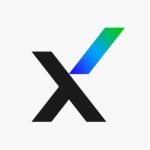Normally, we use the solution for day-to-day investigations. We get alerts when something is going on in the environment. Right now, we are using that tool for the asset management team to identify services or applications that are not allowed for governance and all of these purposes. In addition to that, we use it for isolating devices. We also have a service with them, an MDR service. They analyze information, and they do investigations for us as well.
Mainly, we were concerned with the visibility of the environment. We didn't have a tool that was able to allow us to see or have visibility of what the endpoints were doing on the servers in the environment. That was the main reason to adopt this solution - to have visibility on the environment as, in the past, we didn't have that capability.
The isolation of devices has been really important. We like all the attack surface-managed NPEs. It's helping us to identify devices and protect us on the network. That's in combination with third-party integrations as well. We have integrations that are helping us to identify devices using our vulnerability management services. It's scanning the network and it's sending all that data to VisionOne. With that information, we identify devices that are protected on the network and the environment.
The reports are a really good feature for showing results to upper management levels.
The search features help us try to correlate information and identify any suspicious activity. That's another feature that has been really important.
We are using it everywhere except for the network, so we don't have the network discovery service from Trend Micro. However, we have it on endpoint servers and email and also the cloud as well. We use cloud conformity to connect that piece.
Trend Micro has a feature called Vision One, that provides us with centralized visibility management across all protection levels. That's helping us to have a centralized view of the console. That's the main reason why we still have that product.
Centralized visibility is important. When we are doing investigations, we can do everything in one console instead of moving to different screens or different windows. The centralized visibility and management across these protection levels helped with our efficiency. It helps us to identify quicker, any potential threat, or any special activity.
They have this feature called Risk Index which I use sometimes to validate the level of rates we have. We don’t use it often - maybe once every one or two weeks. We use it to rank our security operations overall. Mostly, we just check it out of curiosity.
We use the Managed XDR service that they have. It relieves a lot of workload especially during investigations or interim reports about any particular activity - especially with the coverage after hours. It is helping us with the capability there. Also, if something really bad is happening, we have eyes watching all the activity, which is nice.
Using this Managed XDR service enables our team to work on other tasks - especially when we, in certain ways, allocate some of the investigation pieces. We basically create a request for them to investigate things, and that allows us to focus on other things to optimize our security toolset. That's really helpful.
We use the attack surface risk management capability they have. We use that heavily right now. It was a big use case in the past few months. We use it to identify multiple devices without protection, the applications that have been used by our users, and which ones are risky. We are using that on a regular basis. It's helped us identify blind spots and more assets. It's positively affected our security posture by improving a lot of our visibility.
XDR helped us decrease our time to detect or respond to threats. In the past, we didn't have that visibility. When we enabled that tool, at the beginning, it was a little bit noisy. That's something to be expected coming from a new tool. However, after testing through these years, things are improving, and now we can see better results, especially during investigation alerts.
The solution has helped us to reduce the amount of time we spend investigating false positive alerts. In the beginning, there was a large amount of false positives. Right now, we are day to day trying to reduce them. At this point, they are lower compared with the beginning of the implementation. Things are improving. We are reducing false positives as we go which is great.
We do use the automation capability a little. However, we noticed some limitations, especially on the playbook side. The API we use. We are integrating that with another product, a SOAR product. The playbooks are a little bit limited in what they can do at this point. Let's say that we want to connect on a specific API. The templates we cannot modify very well. When we noticed that limitation, we decided to go and use Trend Micro VisionOne API and connect it to other tools to develop that activity using another product.
Under attack surface management, when you go to the specific sites or applications that the users are accessing, the capability of downloading that report could be better. Let's say, as an example, we want to identify users using chatGPT, for example. We want to download that data through an API or through the GUI. Right now, it's not available as an option. Maybe having the capability of extracting data from VisionOne for specific areas of the tool could work. That's something that could be useful, especially if we want to generate that report and send it to specific teams. Often, we don't want to provide DX to all the people. Sometimes it's easier to just have that file and share that file with the people who need to have that information.
I've been using the solution for around three years now.
The stability is good. It's not very common to have any outages. Sometimes there may be a glitch, however, it's rare. Normally we have 95% stability.
The scalability is good, especially when we are talking about third-party integrations. We can have visibility and control of all different assets. So we can have good scalability and visibility and know more about the environment in places where we didn't have any idea things were happening. It's a SaaS tool, and we don't have to do any maintenance, and it's easy to deploy. It's pretty straightforward.
When we have specific issues or problems connecting some products we ask for support. They respond really fast. They always try to mitigate and resolve all the issues we have. If they cannot resolve the problem, they normally share some suggestions on how we can mitigate future problems.
We did not use other solutions, although we did use Apex One for a long time. We have also used an EDR product.
I was involved in the deployment. I was the one leading the data during the implementation. The process is pretty straightforward. It was a little tricky to reduce the false positive alerts, however, the portion of deploying to the environment and connecting the pieces was simple.
From our side, we had three or four people involved in the implementation.
We had some help with the deployment and we had some guidance in the beginning. We requested some support from our account manager.
The pricing is good if you look at all the compatibilities and features offered by the product. There are features that can increase the pricing. We can put some credits to some features, however, if we want to enable them. With the amount of credit we have, we are covered for all of our needs.
I'd rate the product eight out of ten.
It is a really good product and easy to deploy. They allow you to have more visibility on your environment, especially if you have any kind of XDR solution. It will increase the visibility of what's happening in the environment. Also, from the perspective of doing maintenance updates or patches, the cloud is the way to go. The product management team does a really good job of increasing the features, and they are listening really closely to what the customer needs via feedback.


















